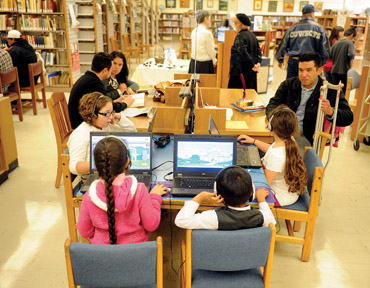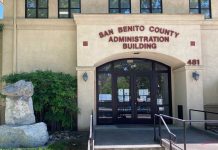
Community leaders this week discussed possible solutions to revamp the library system in San Benito County at a forum, where local officials on a panel committed their support to finding more revenue streams and updating the 60-year old library.
Officials and residents came together for a panel discussion on the “Future of San Benito County Libraries” at the San Benito County Free Public Library on Wednesday. It was put on by Vision San Benito County, a civic-participation group established by the Community Foundation for San Benito County.
“A public library is the only public institution that is for everybody,” said panelist Elizabeth Martinez, library director for the Salinas Public Library and former executive director of the American Library Association.
The forum featured five panelists, including Martinez, Hollister Councilman Victor Gomez, County Supervisor Jerry Muenzer, Gavilan College Head Librarian Doug Achterman and county Republican Party Chairman Rob Bernosky. They discussed such matters as prospective funding mechanisms, how to reach goals from prior visioning workshops, and the social and economic impacts of libraries.
“I think it’s very important we have a library,” Muenzer said.
But Muenzer said because library funding is tied to the county’s general fund, it’s an “up and down situation.”
Muenzer mentioned his previous votes to maintain the library. He said he had felt pressure from some south county residents to fund a more robust police presence in his district rather than the library. He said he chose to back more funding for the library.
Gomez said a place such as a library can actually lower crime rates, making the need for more police funding less important.
Muenzer said the community would have to fund any changes to the library. He said that whether it’s a new property tax, sales tax or bond measure, residents need to “decide for themselves.”
Bill Tiffany, a member of the Library Action Committee that helps find funding for the library, asked Gomez and Muenzer if they could support committing a portion of a sales tax to library services.
Both said they would support a measure like that if the community wanted to pursue it.
Gomez said it’s important to have varying members of the community – including farmers, Gavilan College, the high school, Hollister School District, the county and the city – on board. That could lead to change, he said.
“We’re not dictators up here,” he said.
But he said politicians could support and campaign for library growth.
“Unless we have buy-in from the community, what’s the point of pushing?” he said.
Some forum participants, however, said that without political leadership, nothing much could get done.
“You need conviction if you want it to happen. It needs to come from the top,” said library volunteer Spiro Papadopoulos.
The group members spoke about how they could improve upon what the library has and what it doesn’t have.
The panelists talked about how to implement portions of a strategic plan that was put together through visioning workshops in 2010 and 2011.
Julie Morris, the panel moderator, said people wanted the public library to be accessible, adequately staffed, and open seven days a week.
“How do we make that vision a reality?” she asked the panel.
She said because of budget problems, funding for the public library is down 29 percent from the previous year – with a staff cut of 39 percent.
Now, the library is open only four days a week instead of six, even as the number of visitors going to the library is up and the county has increased in population.
Jeannette Langstaff, of Hollister, said the county needs to look at the “models” of libraries in nearby counties and that officials should consider opening the local library for six or seven days a week.
“If they can do it, why can’t we?” she said.
The panel also discussed how a revamped library might improve the community economically and socially.
Achterman, the Gavilan librarian, discussed statistics that showed how access to public libraries actually helps to decrease poverty and raise living standards in communities.
“For every dollar we spend (on public libraries), up to $4 to $8 dollars in return on investment is gained back,” he said.
Gomez said from his experience as a child growing up in a family with 11 children and with both parents working full time, access to books was hard to come by.
“My quiet room was here in the library,” he said.
He said access to libraries gives young people a positive place to go instead of “liquor stores or bowling alleys.”
“If folks have access to a library, the less chance people will enter into the criminal system,” he said.
Panelists also kicked around the idea of making the library a center for all government and county information – and how that might be a way for the city and county to save money.
“Library is a hub, the center. You have to have it,” Martinez said.








